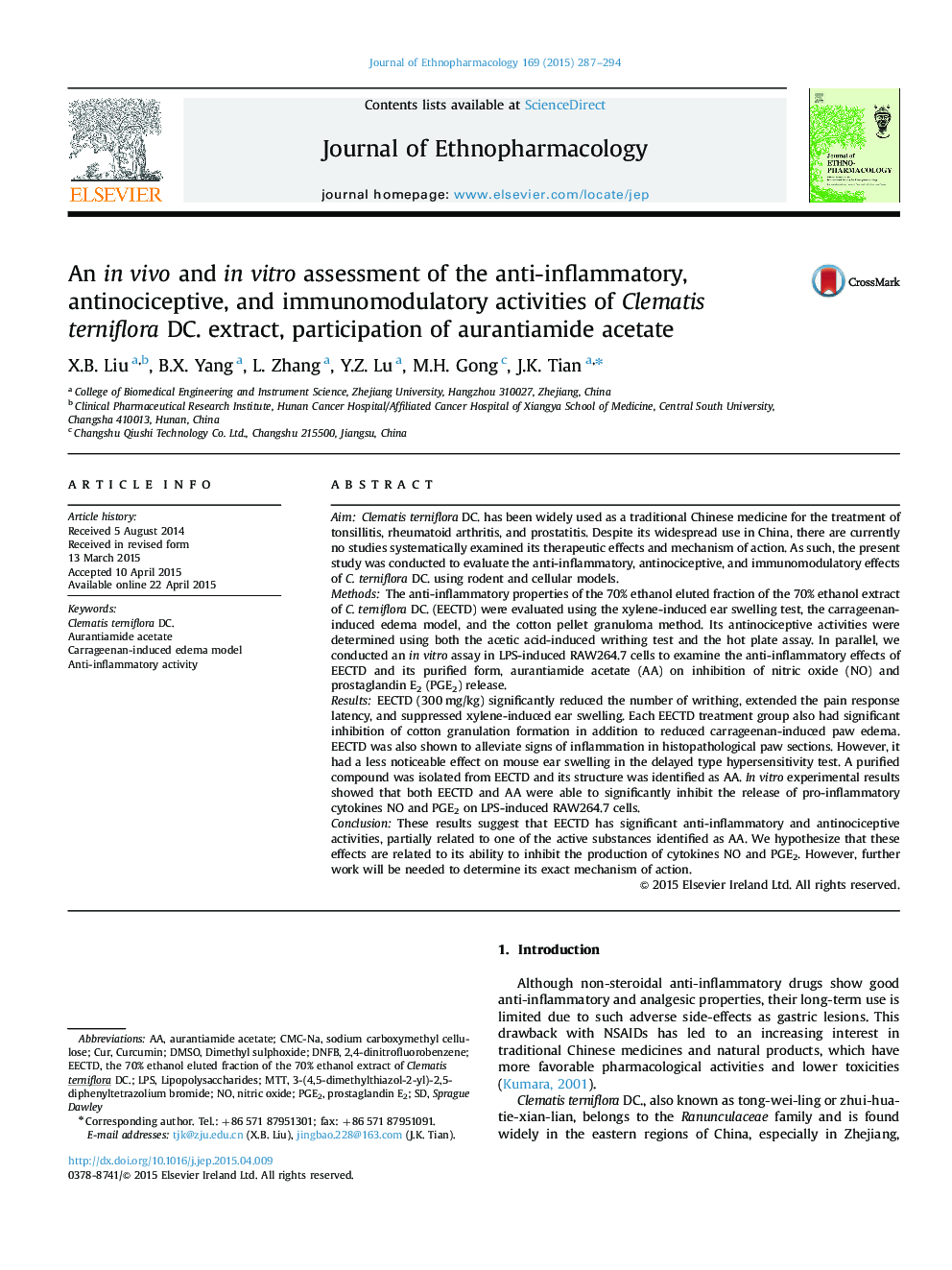| کد مقاله | کد نشریه | سال انتشار | مقاله انگلیسی | نسخه تمام متن |
|---|---|---|---|---|
| 2544992 | 1560393 | 2015 | 8 صفحه PDF | دانلود رایگان |

AimClematis terniflora DC. has been widely used as a traditional Chinese medicine for the treatment of tonsillitis, rheumatoid arthritis, and prostatitis. Despite its widespread use in China, there are currently no studies systematically examined its therapeutic effects and mechanism of action. As such, the present study was conducted to evaluate the anti-inflammatory, antinociceptive, and immunomodulatory effects of C. terniflora DC. using rodent and cellular models.MethodsThe anti-inflammatory properties of the 70% ethanol eluted fraction of the 70% ethanol extract of C. terniflora DC. (EECTD) were evaluated using the xylene-induced ear swelling test, the carrageenan-induced edema model, and the cotton pellet granuloma method. Its antinociceptive activities were determined using both the acetic acid-induced writhing test and the hot plate assay. In parallel, we conducted an in vitro assay in LPS-induced RAW264.7 cells to examine the anti-inflammatory effects of EECTD and its purified form, aurantiamide acetate (AA) on inhibition of nitric oxide (NO) and prostaglandin E2 (PGE2) release.ResultsEECTD (300 mg/kg) significantly reduced the number of writhing, extended the pain response latency, and suppressed xylene-induced ear swelling. Each EECTD treatment group also had significant inhibition of cotton granulation formation in addition to reduced carrageenan-induced paw edema. EECTD was also shown to alleviate signs of inflammation in histopathological paw sections. However, it had a less noticeable effect on mouse ear swelling in the delayed type hypersensitivity test. A purified compound was isolated from EECTD and its structure was identified as AA. In vitro experimental results showed that both EECTD and AA were able to significantly inhibit the release of pro-inflammatory cytokines NO and PGE2 on LPS-induced RAW264.7 cells.ConclusionThese results suggest that EECTD has significant anti-inflammatory and antinociceptive activities, partially related to one of the active substances identified as AA. We hypothesize that these effects are related to its ability to inhibit the production of cytokines NO and PGE2. However, further work will be needed to determine its exact mechanism of action.
Figure optionsDownload high-quality image (169 K)Download as PowerPoint slide
Journal: Journal of Ethnopharmacology - Volume 169, 1 July 2015, Pages 287–294